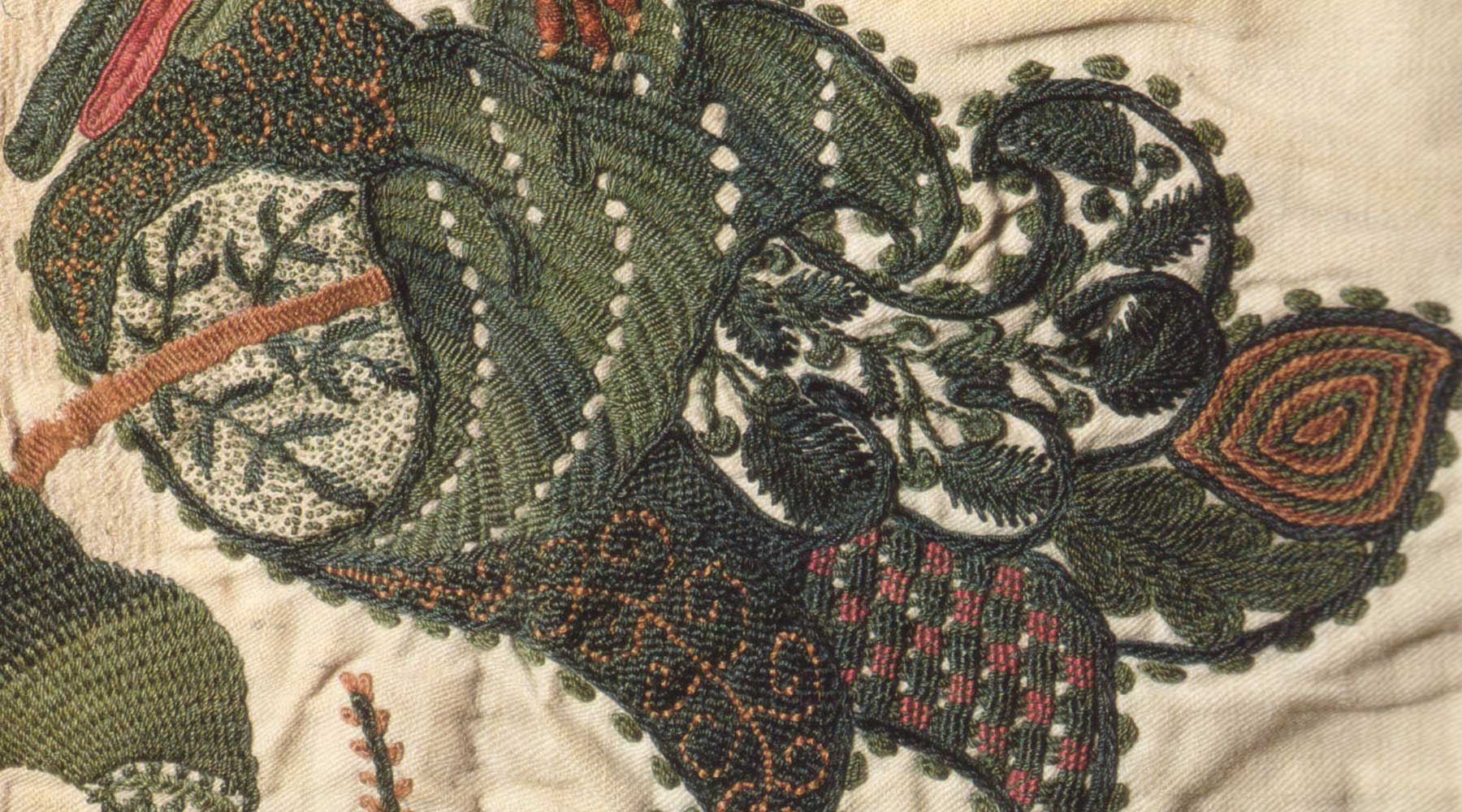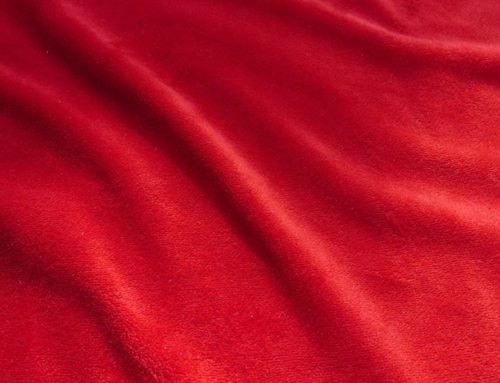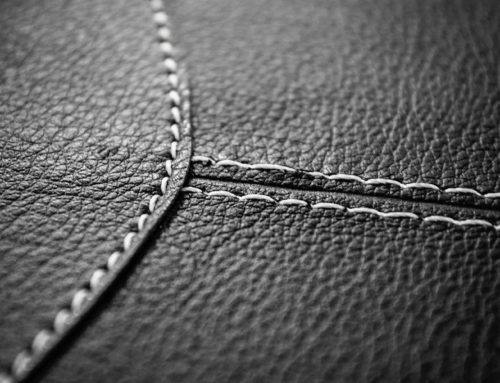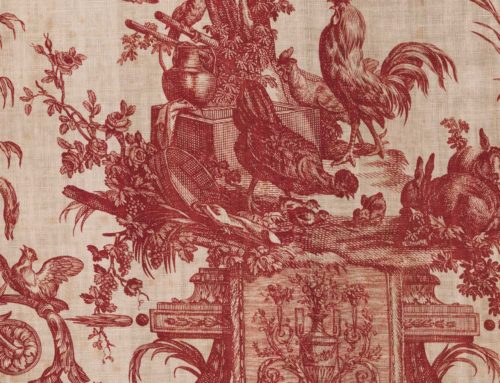We continue our series of blogposts covering the fabrics used in upholstery. Blogpost 7 in the series continues with us covering Crewel, Tapestry and Chenille fabrics below:
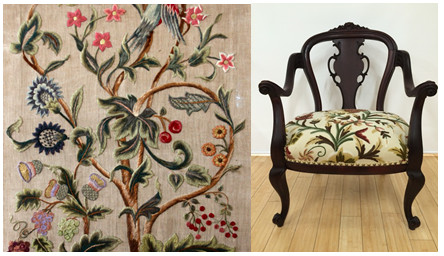
Crewel:
Crewel fabric is traditionally hand-embroidered using woolen yarn, normally on plain cotton or linen fabric (in a plain or twill weave), although some fabric sold as crewel is made using silk and velvet. Originating in the region of Kashmir, the colourful patterns produced are often floral, and produced a raised, dimensional fabric. Due to the composition of the fabric, the raised embroidery and traditionally large pattern repeats in authentic crewel, although it is quite durable, it may be considered more suitable for curtains and soft furnishings rather than for use in general upholstery.
If you do decide to use it for upholstery, it may be most appropriately used on a smaller secondary chair as in the picture above, rather than a full sofa. Good quality crewel fabric is very expensive, so for general upholstery, it may be better to choose a printed fabric which resembles crewel, for the reasons outlined above, as well as the overall financial outlay involved.
 Tapestry:
Tapestry:
Tapestry fabrics look like embroidery, although proper tapestry fabric is woven on a jacquard loom whereas embroidery has a ground fabric onto which threads are sewn to form a picture. Often referred to as ‘textile art’ the design is formed by the weft threads (weft-facing), which are tightly packed to cover the warp threads. The warp threads are normally completely covered so play no part in the design. Most weavers use a natural warp thread, such as wool, linen or cotton. The weft threads are usually wool or cotton, but may include silk, gold, silver, or other alternatives.
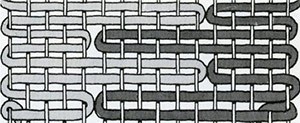 Each colour of weft is worked only in its own section of the design, so there are many different wefts on the go at any one time. Unlike other types of weaving, it is rare for the weft to run across the entire width of the piece. This is known as a ‘discontinuous weft’ as shown in the diagram below:
Each colour of weft is worked only in its own section of the design, so there are many different wefts on the go at any one time. Unlike other types of weaving, it is rare for the weft to run across the entire width of the piece. This is known as a ‘discontinuous weft’ as shown in the diagram below:
Due to the composition and weave of a tapestry fabric, they are not normally suited to general upholstery as they don’t stretch well and can pick/fray easily, but they can be used more appropriately for soft furnishings and curtains or hanging pieces or art, as was the original intended purpose for tapestry fabric. There are many different imitation ‘tapestry-style’ fabrics which may be more appropriate for use in general upholstery, although you should check the exact composition and weave of any such fabrics before use.
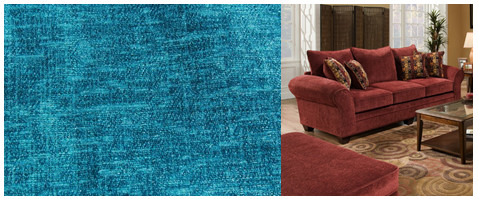 Chenille:
Chenille:
Chenille (pronounced “she-neel”) is the French word for caterpillar, and accurately describes the fuzzy nature of the finished fabric. Originally made from silk or wool, but is now more commonly made from cotton or viscose. It is typically woven using the fuzzy Chenille yarns as the weft and another fibre for the warp. Usually a plain weave is used to make a Chenille fabric but many others can also be used such as a twill weave. Chenille fabric will look different in one direction compared to another, as the fibres catch the light differently.
Chenille is a soft fabric that is considered very comfortable, and thus is a popular choice for general upholstery. Although durable, it tends to shrink and can be difficult to remove stains from (often the fabric needs to be dry cleaned), so you should think carefully about where you use such fabric for general upholstery purposes. Chenille fabric can also stretch easily, and should never be hung, thus making it a poor choice of fabric for making curtains from.


